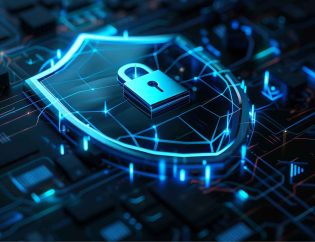
Table of Contents
Why Endpoint Security Matters
Endpoint security plays a vital role in protecting modern businesses from cyber threats. As endpoints like laptops, smartphones and IoT devices serve as access points to your network, they are prime targets for hackers. Ensuring the best enterprise endpoint security helps:
Safeguard sensitive business data:
Protects proprietary information and ensures customer trust by preventing breaches.
Prevent malware, ransomware and phishing attacks:
Stops advanced threats before they can disrupt operations or steal information.
Maintain regulatory compliance:
Adheres to data protection laws like GDPR, HIPAA and PCI DSS, avoiding legal and financial penalties.
Ensure uninterrupted business operations:
Keeps systems functional and employees productive, even in the face of evolving threats.
Key Features of the Best Endpoint Security Software
When selecting the best endpoint security software, ensure it includes these key features:
Real-time threat detection:
Identifies and neutralizes cyber threats instantly, minimizing the potential impact on your systems.
Behavioral analysis:
Detects unusual activities to prevent breaches by analyzing user and system behavior patterns.
Data encryption:
Protects sensitive data during storage and transmission, making it inaccessible to unauthorized users.
Centralized management:
Offers a single dashboard for managing security across all devices, simplifying oversight and improving efficiency.
Scalability:
Adapts to growing business needs by supporting additional devices and users without compromising security.
Integration with threat intelligence:
Leverages global databases to counter emerging threats, ensuring your systems stay ahead of potential vulnerabilities.
Endpoint Security Best Practices
To maximize the effectiveness of your best enterprise endpoint security strategy, follow these best practices:
Regular updates:
Keep all devices and software updated to address vulnerabilities and reduce risks.
Employee training:
Educate staff on identifying phishing scams, social engineering attempts and malware to enhance the human layer of security.
Multi-layered protection:
Combine antivirus tools, firewalls, intrusion detection systems and endpoint protection for a comprehensive defense.
Backup data:
Regularly back up important files to secure locations to prevent loss or downtime during attacks.
Monitor activity:
Use advanced tools to track and analyze endpoint usage in real-time, ensuring immediate detection of unusual activities.
Bullet Points for Quick Reference:
Steps to Implement the Best Endpoint Security Solutions
Conduct a Risk Assessment:
Identify vulnerabilities in your IT infrastructure and prioritize areas that need immediate attention.
Define Your Requirements:
Determine your business’s unique security needs, such as device types, network configurations and compliance requirements.
Choose the Right Software:
Evaluate options based on features like threat detection, scalability, ease of use and integration capabilities.
Test the Solution:
Deploy the chosen solution in a controlled environment to ensure compatibility, efficiency and effectiveness.
Train Employees:
Provide thorough training to help staff understand the tools and their role in maintaining security.
Monitor and Optimize:
Continuously review performance metrics and update settings as needed to enhance protection.
Challenges and How to Overcome Them
Implementing the best endpoint security solutions can come with challenges, such as:
Budget constraints:
Smaller businesses may struggle to afford comprehensive security tools. Opt for scalable solutions that grow with your business.
Complex integrations:
Ensuring seamless compatibility between new security tools and existing systems requires planning and expertise. Partner with vendors offering easy-to-integrate solutions.
Evolving threats:
Cybercriminals continually develop sophisticated attacks. Use software with regular updates and global threat intelligence to stay protected.
Employee resistance:
Resistance to new tools can hinder adoption. Emphasize the importance of security through clear communication and regular training.
Common Challenges and Solutions
| Challenge | Solution |
|---|---|
| Budget constraints | Opt for scalable, cost-effective tools. |
| Complex integrations | Partner with vendors offering easy setups. |
| Evolving cyber threats | Use software with regular updates. |
| Employee resistance | Provide training and emphasize security’s role. |
Protect your business in 2025 with the best endpoint security strategies. Safeguard data, prevent threats and ensure compliance for a secure digital future. #CyberSecurity #EndpointSecurity
— Hyper Secure (@HyperSecure) December 18, 2024
Customer Testimonial
“Switching to the best endpoint security software has transformed our business. We now have real-time threat detection and centralized management, which has made security easier to manage.” — John Smith, IT Director, SecureTech Inc.
FAQs1. What is endpoint security?
Endpoint security is a strategy to protect devices like laptops, phones and IoT tools from cyber threats using specialized tools and practices.
2. Why is the best endpoint security important?
It safeguards sensitive data, ensures compliance with regulations and prevents disruptions caused by cyberattacks, helping businesses maintain operations.
3. How can I choose the best endpoint security software?
Look for features like real-time threat detection, scalability, centralized management and frequent updates to counter emerging threats effectively.
4. What are endpoint security best practices?
Best practices include regular updates, employee training, using multi-layered protection, maintaining backups and monitoring endpoint activities.
5. How does endpoint security ensure compliance?
By using encryption and monitoring tools, endpoint security helps businesses meet data protection regulations like GDPR, HIPAA and PCI DSS.
Conclusion
Hyper Secure, an Endpoint Security Company provides solutions to help businesses select and implement the best endpoint security strategies. Our tools safeguard data, ensure compliance and protect operations from cyber threats. Let us help you secure your digital future with robust, scalable solutions tailored to your needs.








